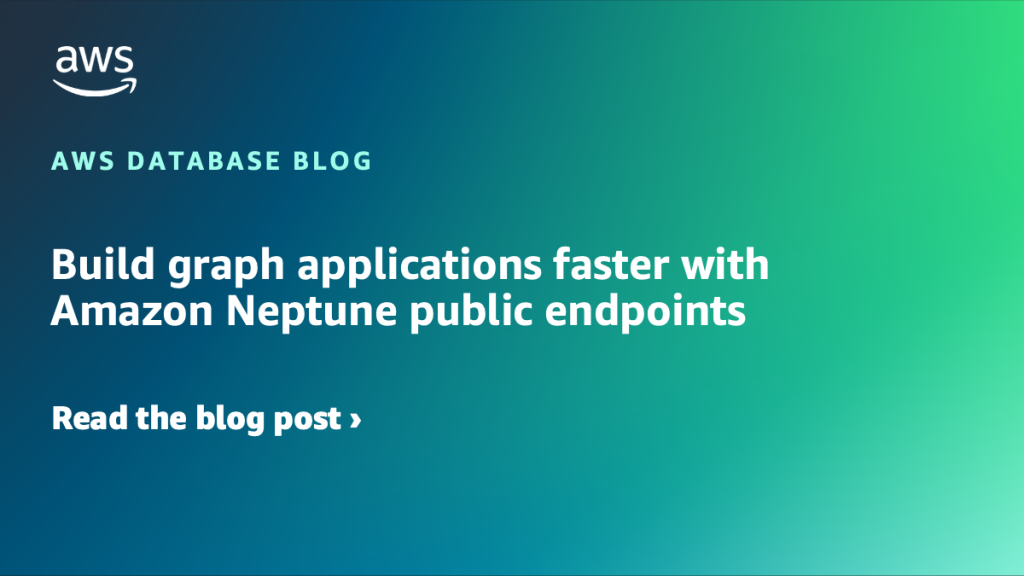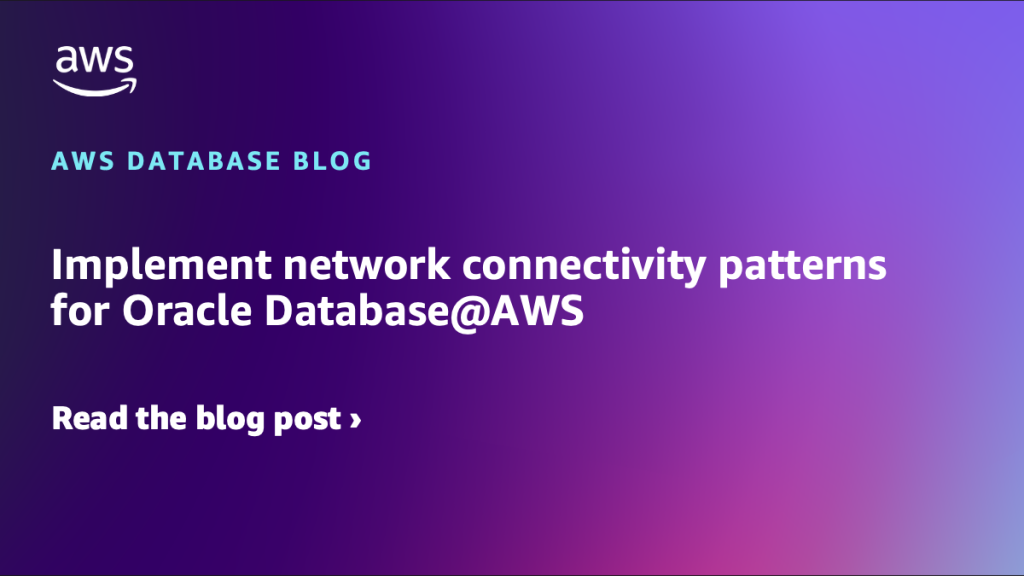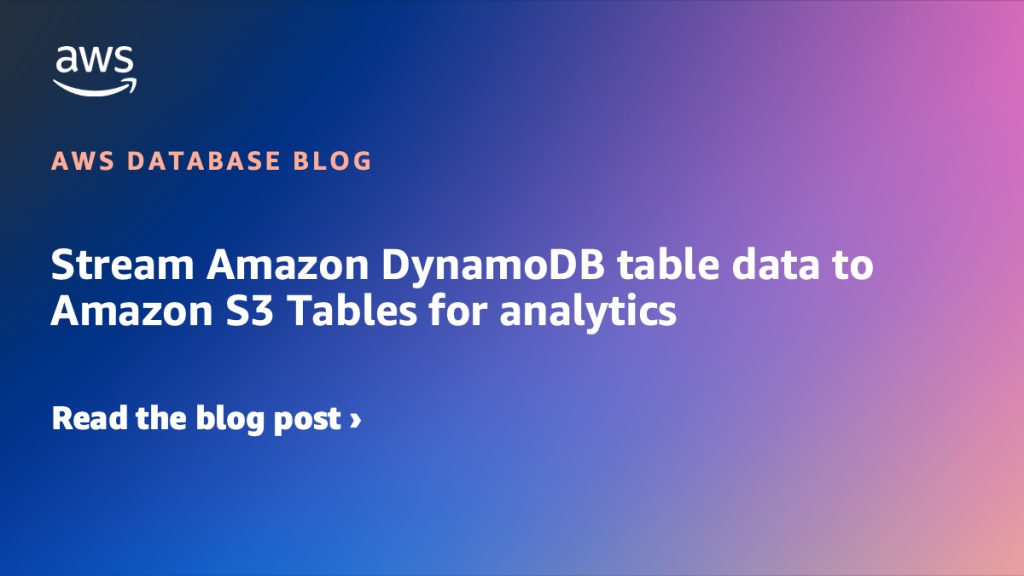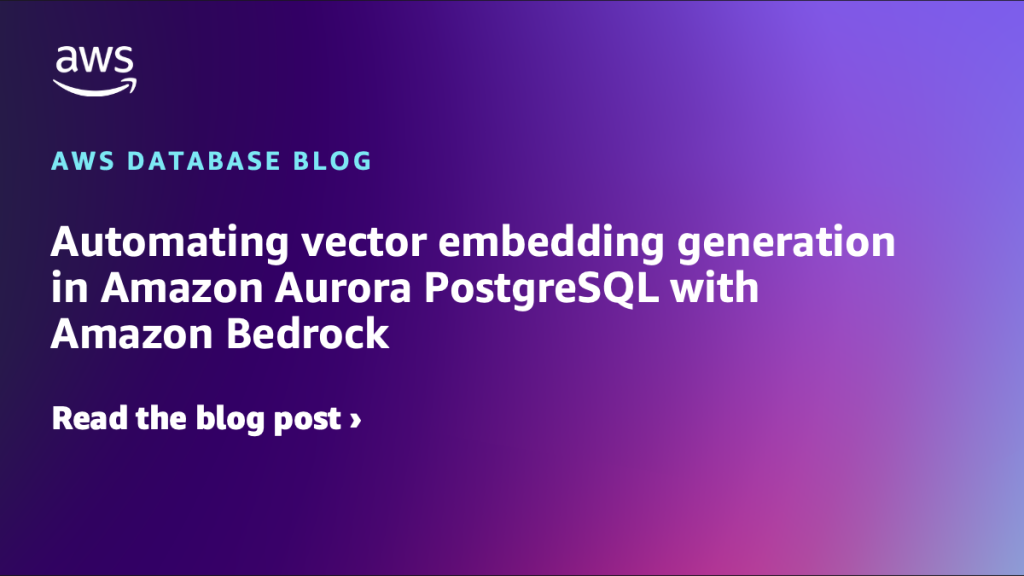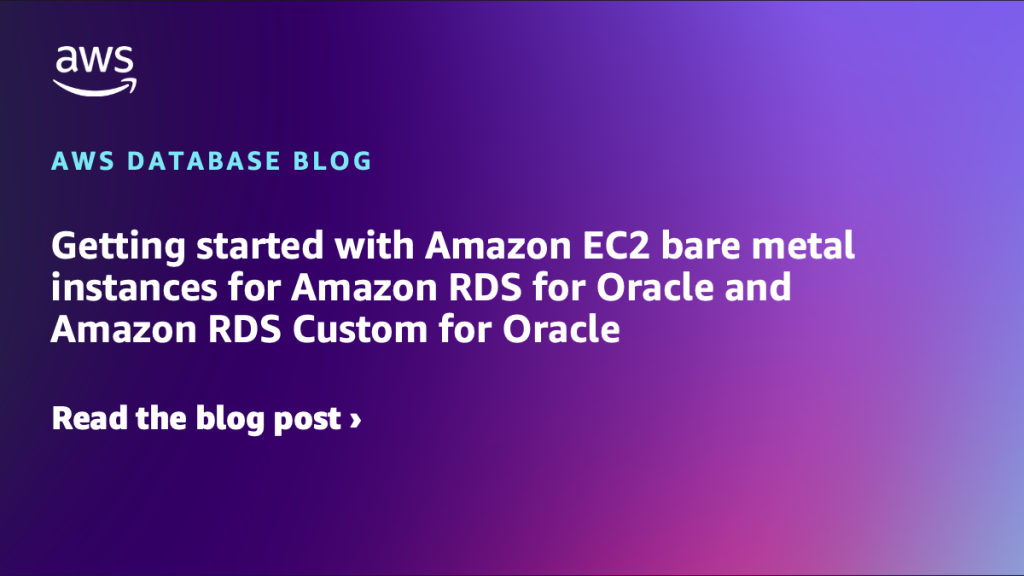AWS Database Blog
Category: Learning Levels
Build graph applications faster with Amazon Neptune public endpoints
Developing applications on Amazon Neptune Database historically required users setup access into the VPC where it is hosted and use either 3rd party drivers or direct HTTP requests. In this post, we discuss how two key features, public endpoints and the Neptune Data API, solve these common challenges in Amazon Neptune application development. Public endpoints […]
Implement network connectivity patterns for Oracle Database@AWS
Oracle Database@AWS (ODB@AWS) is an offering you can use to access Oracle Exadata infrastructure managed by Oracle Cloud Infrastructure (OCI) within Amazon Web Services (AWS) data centers. You can use ODB@AWS to migrate your Oracle Exadata workloads to AWS while maintaining the same performance and features as your on-premises Oracle Exadata deployments. You benefit from […]
Data consistency with AWS DMS data resync
In this post, we deep dive into AWS Database Migration Service Data Resync, a feature that was introduced in DMS version 3.6.1 to detect and resolve data inconsistencies during database migrations, eliminating the need for manual intervention.
Deploy Amazon Timestream for InfluxDB instances with AWS CloudFormation and HashiCorp Terraform
In this post, we show how you can use AWS CloudFormation and Terraform to automate Timestream for InfluxDB instance deployment and teardown.
Stream Amazon DynamoDB table data to Amazon S3 Tables for analytics
In this post, we demonstrate how to stream data from DynamoDB to Amazon S3 Tables to enable analytics capabilities on your operational data.
Automating vector embedding generation in Amazon Aurora PostgreSQL with Amazon Bedrock
In this post, we explore several approaches for automating the generation of vector embedding in Amazon Aurora PostgreSQL-Compatible Edition when data is inserted or modified in the database. Each approach offers different trade-offs in terms of complexity, latency, reliability, and scalability, allowing you to choose the best fit for your specific application needs.
Group database tables under AWS Database Migration Service tasks for PostgreSQL source engine
AWS DMS accommodates a broad range of source and target data repositories, such as relational databases, data warehouses, and NoSQL databases. Proper preparation and design are vital for a successful migration process, especially when it comes to optimizing performance and addressing potential delay issues. In this blog post, we offer guidance about recognizing potential root causes of complete load and CDC delays early in the process and provide suggestions for optimally clustering tables to achieve the best performance for an AWS DMS task.
Reduce your Amazon ElastiCache costs by up to 60% with Valkey and CUDOS
In this post, we show you how to save costs on Amazon ElastiCache by upgrading your cluster engine to ElastiCache for Valkey. If you’re currently using ElastiCache for Redis OSS, you can achieve up to 60% cost savings by upgrading to Valkey.
Getting started with Amazon EC2 bare metal instances for Amazon RDS for Oracle and Amazon RDS Custom for Oracle
In this post, we explore the support for AWS bare metal instances on Amazon EC2 bare metal Instances for Amazon RDS for Oracle and RDS Custom for Oracle.
Scale read operations with Amazon Timestream for InfluxDB read replicas
In this post, we show how to use Amazon Timestream for InfluxDB read replicas to scale your read operations by adding additional read replicas while maintaining a single write endpoint. Built in partnership with InfluxData, our read replica add-on offers InfluxDB open source customers the ability to horizontally scale their read capacity.
